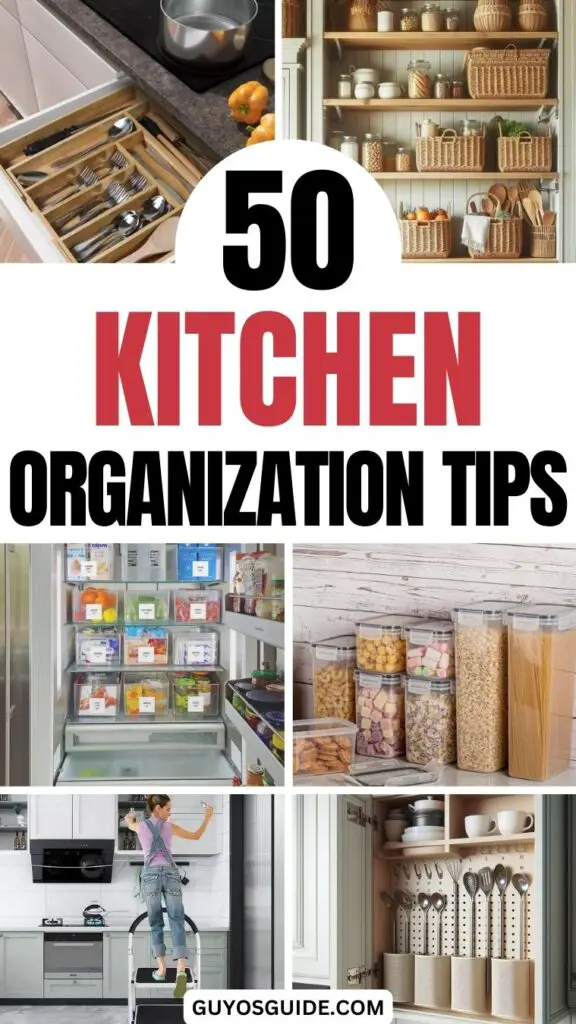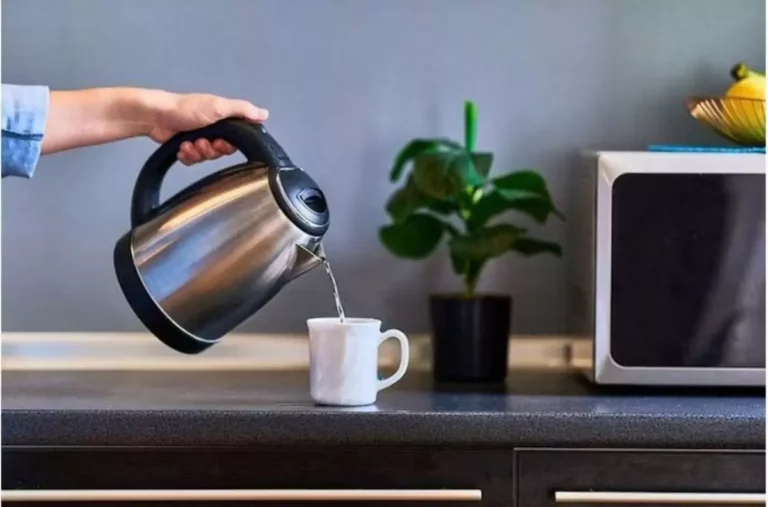50 Kitchen Organization Tips for a Clutter-Free Space

Some of the links in this post are affiliate links, meaning, at no additional cost to you, We will earn a commission if you click through and make a purchase.
A well-organized kitchen can make cooking and meal prep more efficient and enjoyable.
In this article, we will explore practical kitchen organization tips to help you maximize your kitchen space and keep it clutter-free.
Let’s get started.
1. Declutter
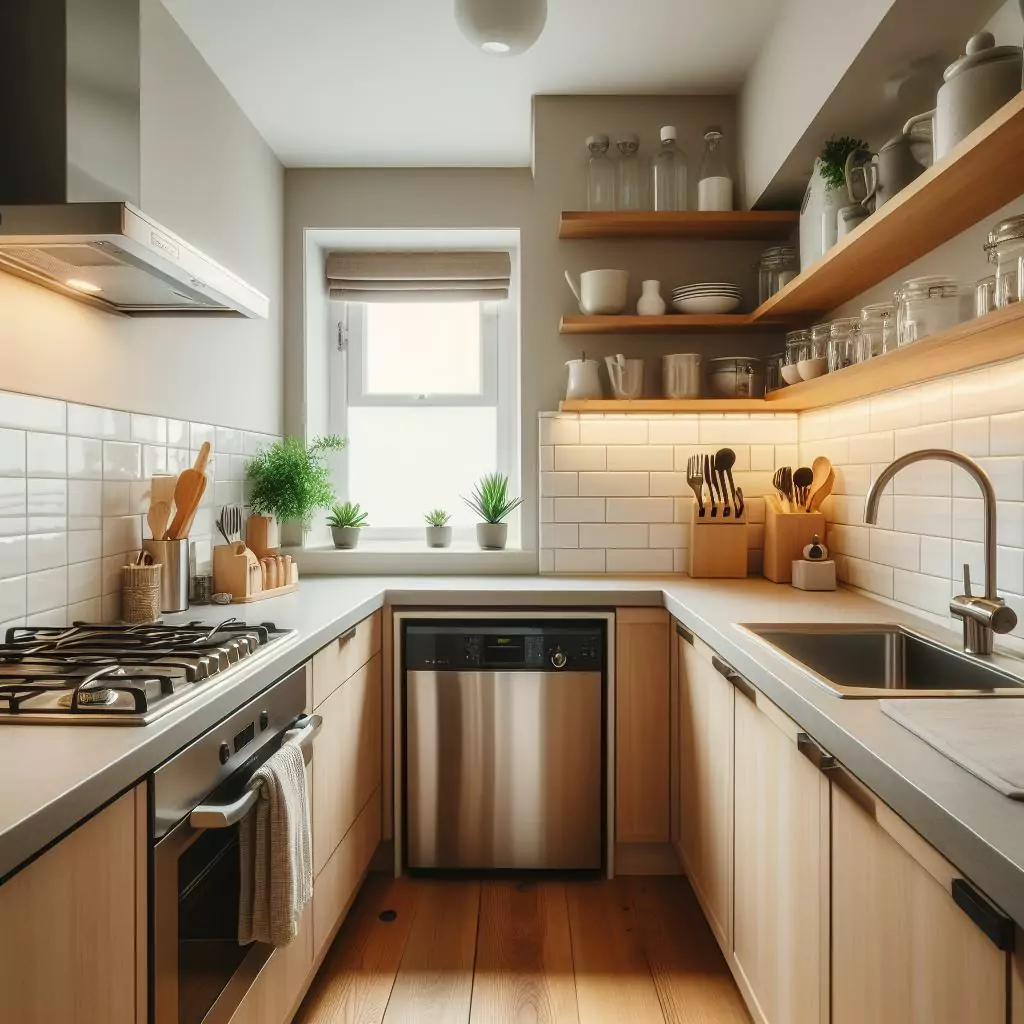
Start by going through your kitchen items and decluttering. Donate or discard items you no longer use or need.
2. Group Similar Items
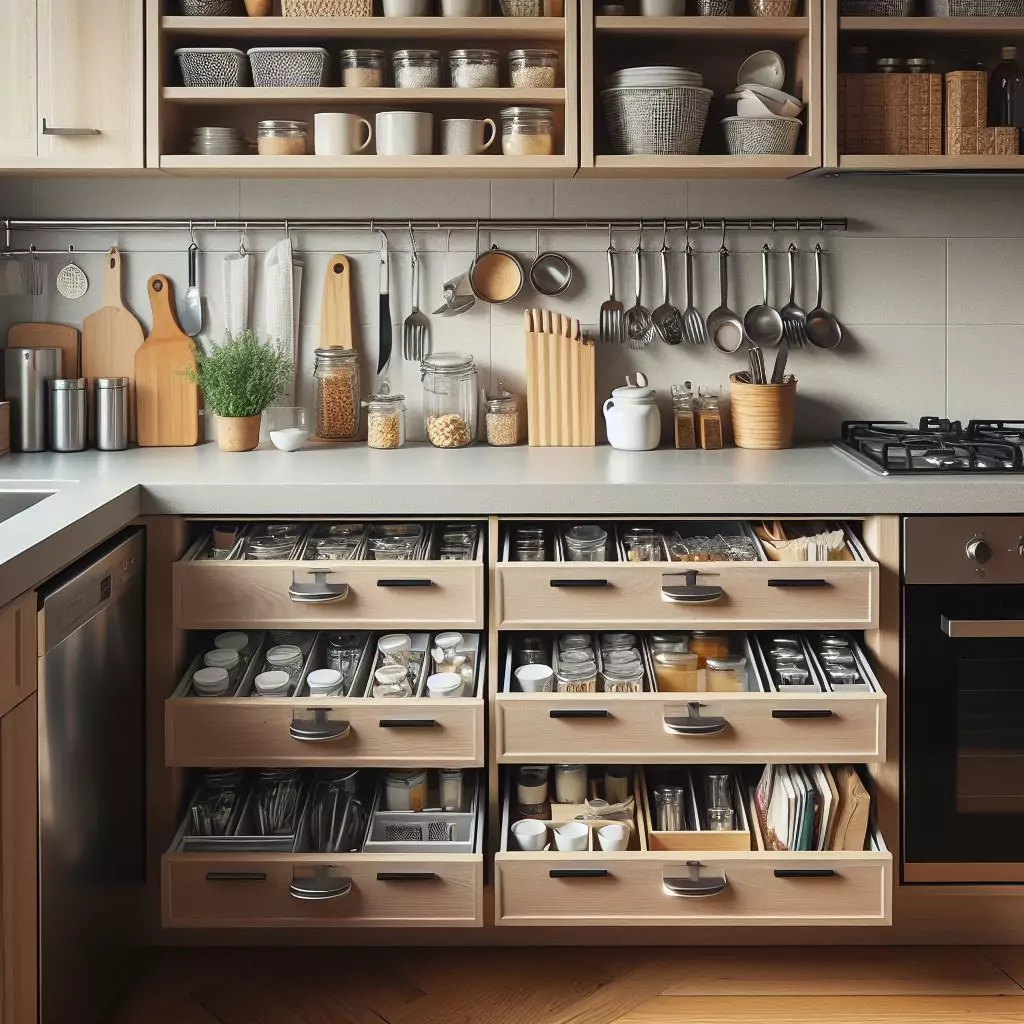
Group similar items together. Store baking supplies, pots, pans, utensils, and other items in designated areas to make it easier to find what you need.
3. Use Clear Containers
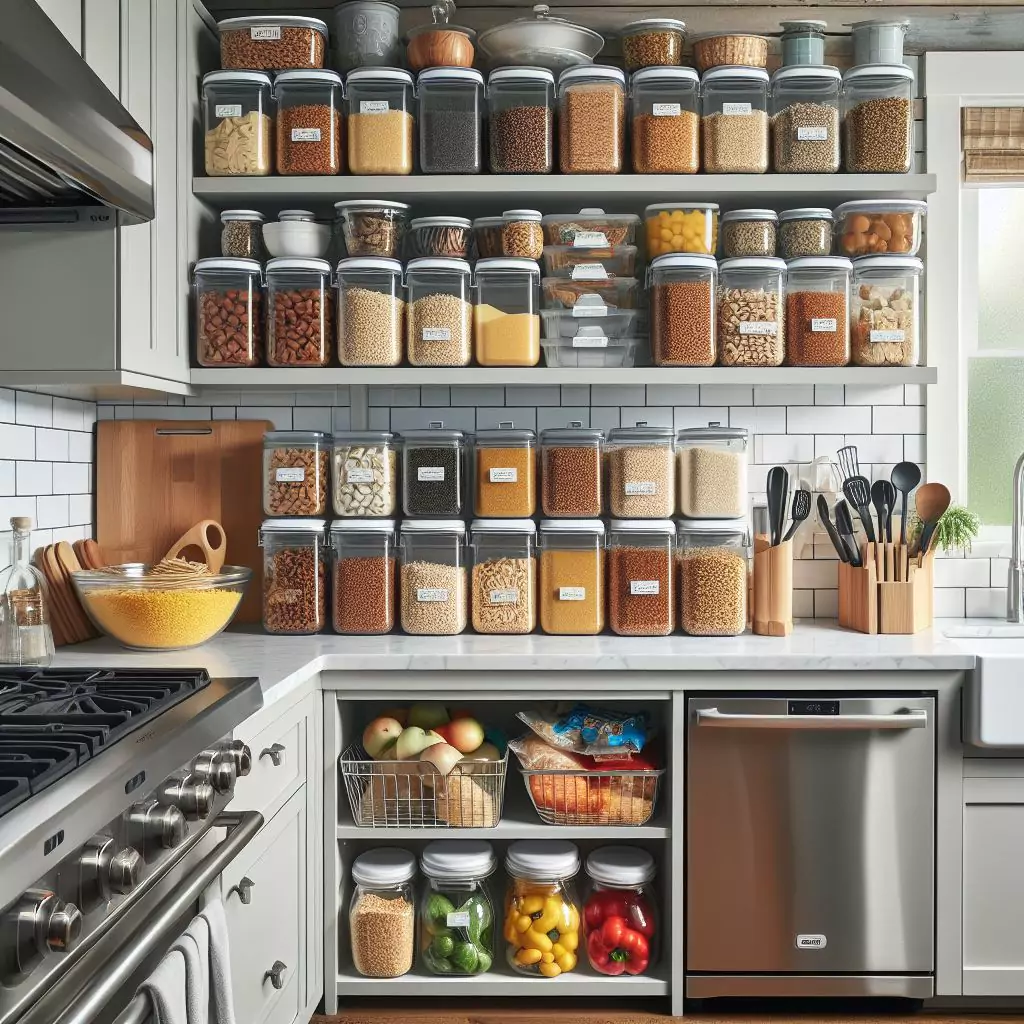
Store pantry items, such as grains, pasta, and snacks, in clear containers. This makes it easy to see the contents and keeps your pantry looking neat.
4. Label Everything
Label containers, drawers, and shelves to ensure everything has its designated place. This helps family members or guests easily find and return items to their proper spots.
5. Optimize Cabinet Space

Use organizers, shelves, and pull-out trays to maximize cabinet space. Consider adding risers or shelf inserts to make the most of vertical space.
6. Install Hooks and Racks
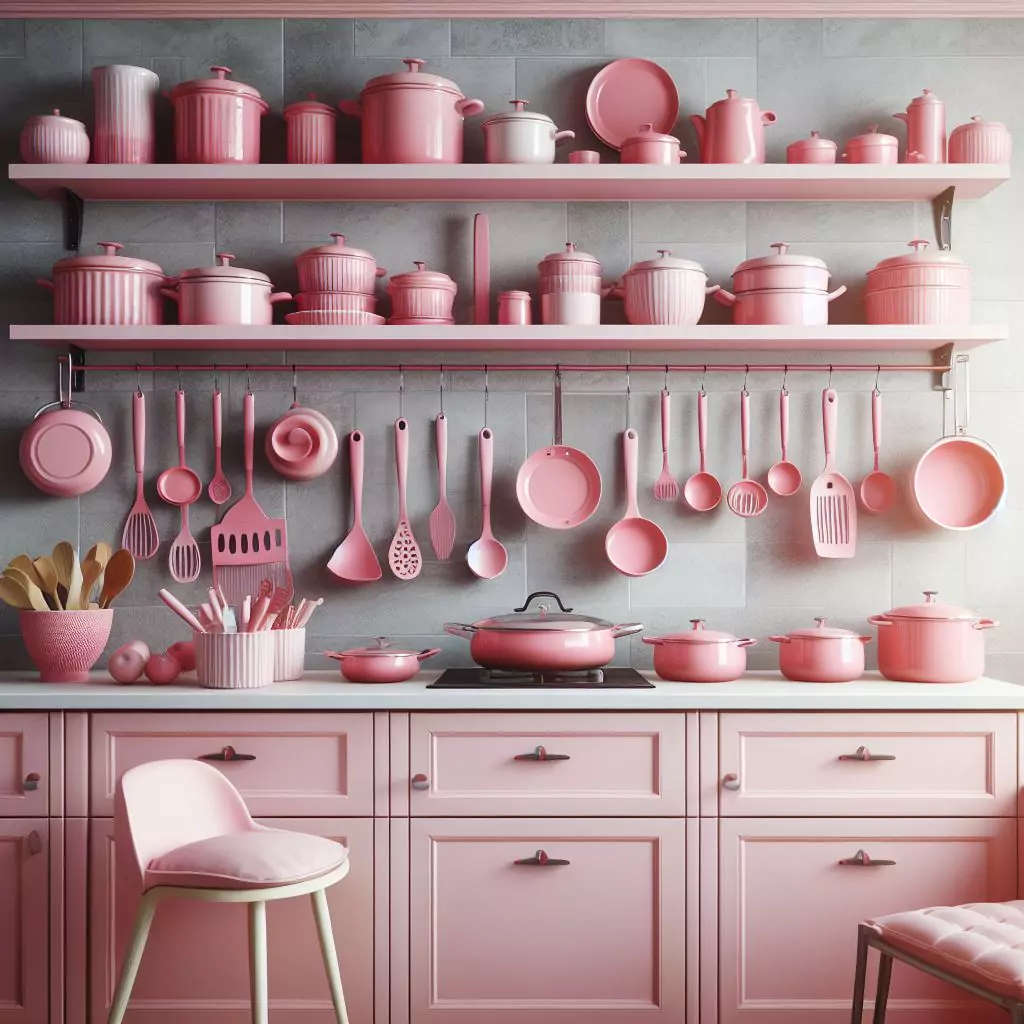
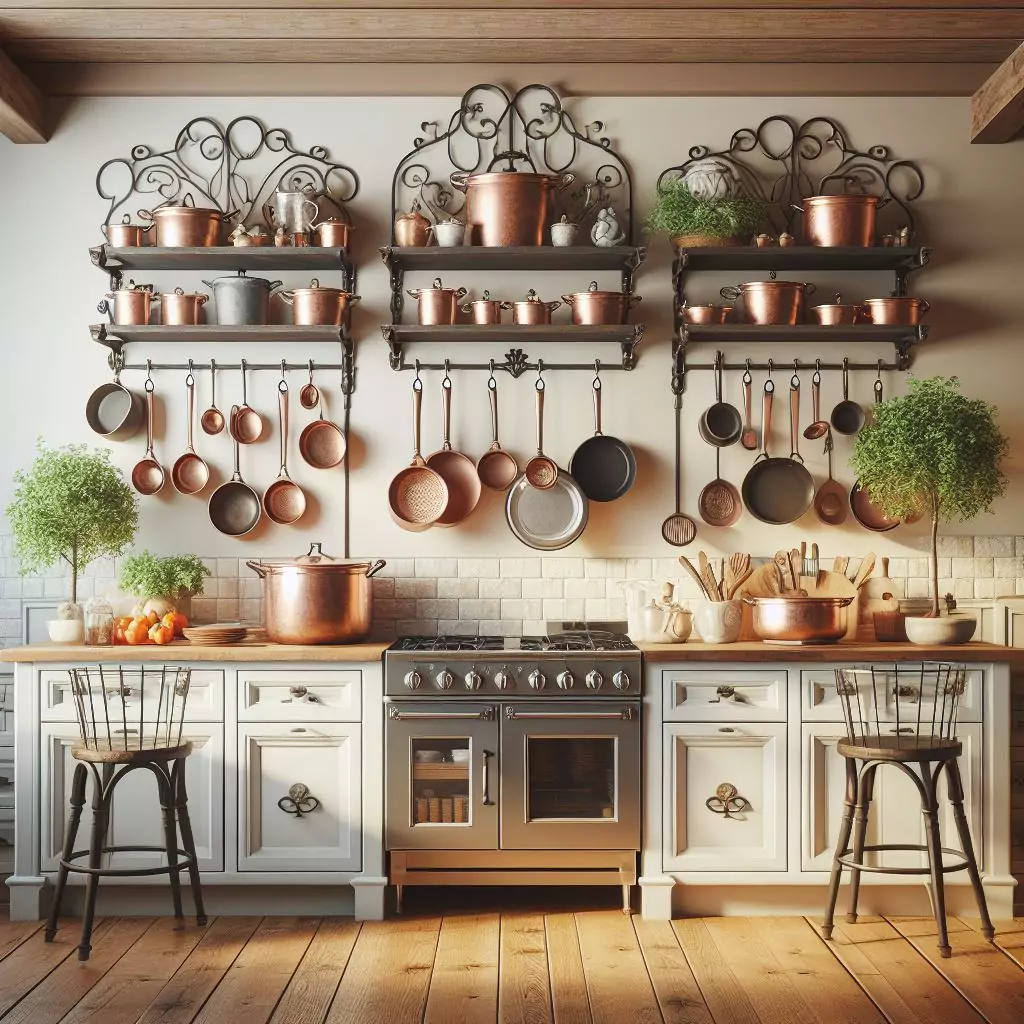
Install hooks inside cabinet doors for pot lids, measuring cups, or utensils. Utilize wall space for hanging pots, pans, or cooking utensils.
7. Invest in Drawer Organizers
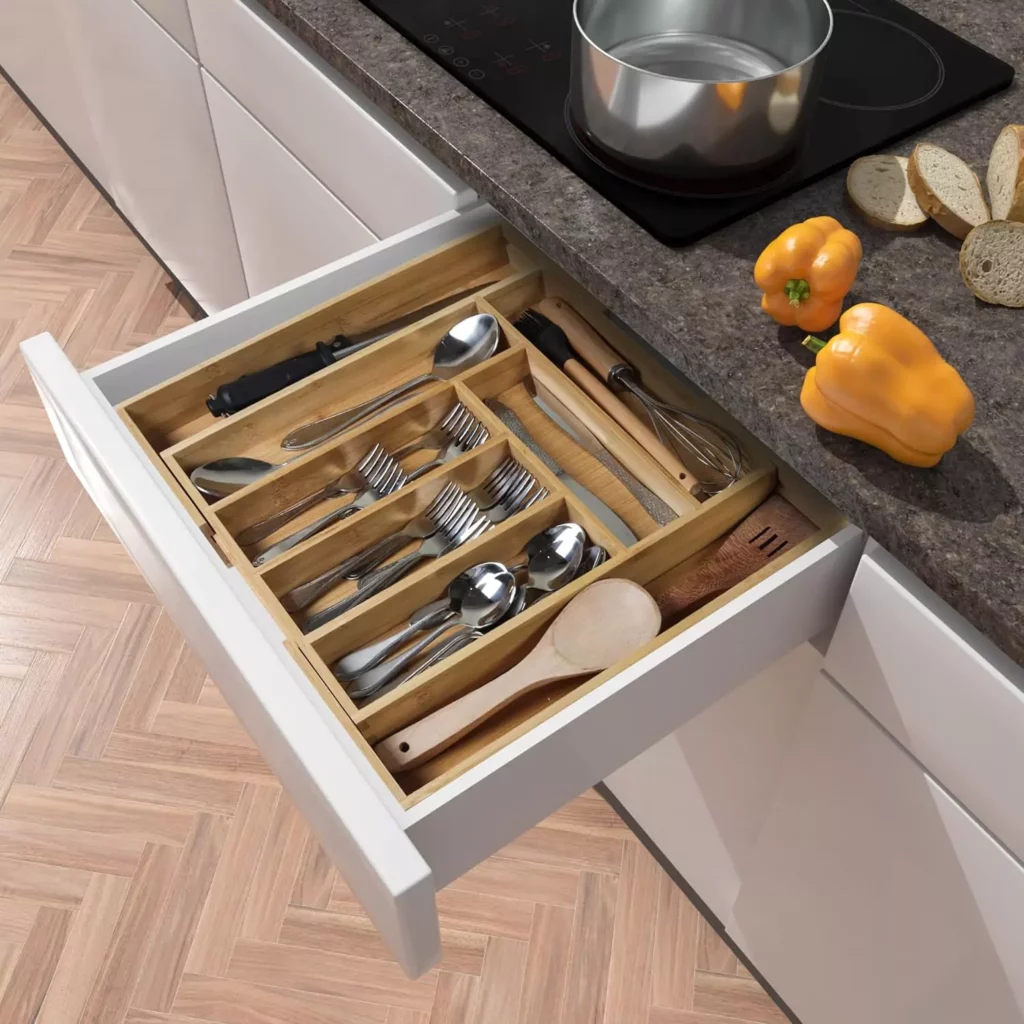
Use drawer dividers or organizers to keep utensils, cutlery, and kitchen tools separated and easily accessible.
8. Arrange by Frequency of Use
Store frequently used items in easily accessible locations. Place everyday dishes and pots within arm’s reach, and reserve higher or lower shelves for less frequently used items.
9. Create a Command Center
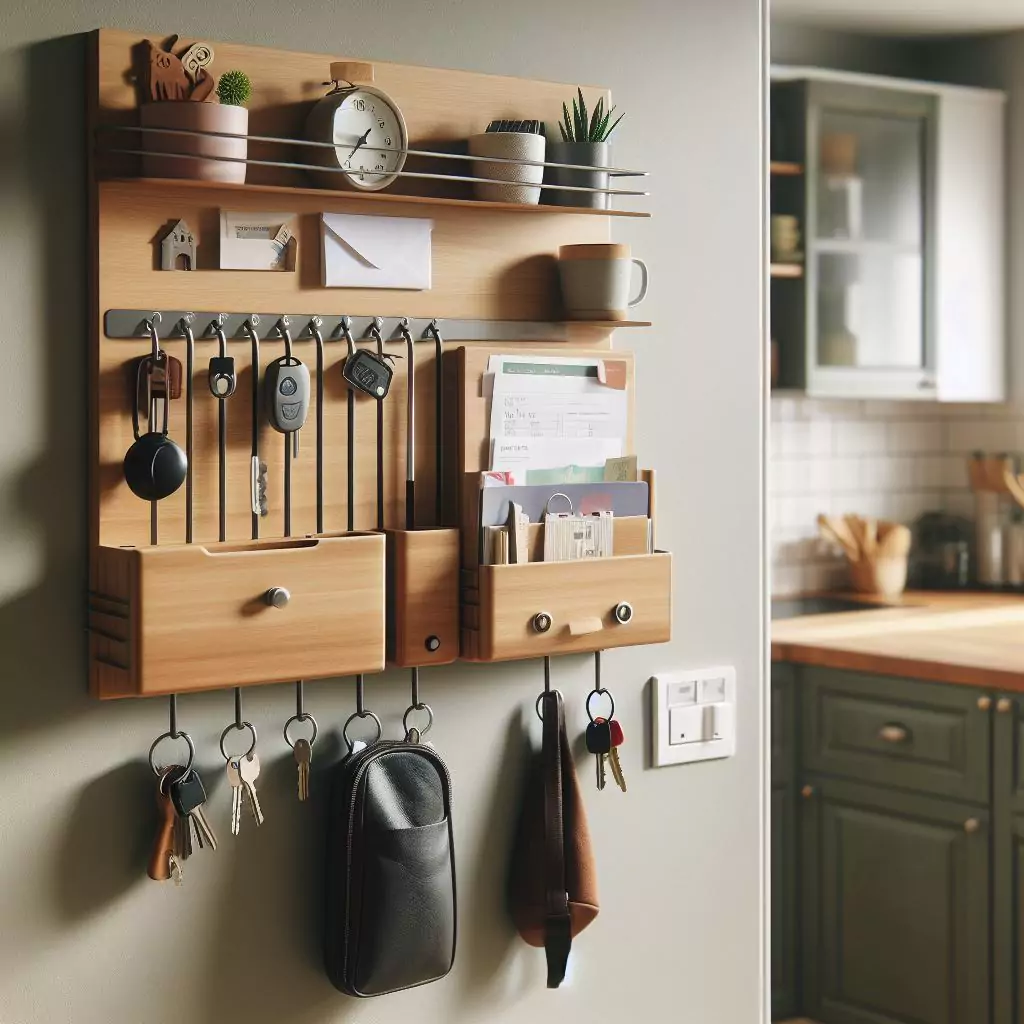
Establish a command center for important papers, schedules, and grocery lists. This can help keep your kitchen organized and serve as a central hub for family communication.
10. Organize Your Fridge

Keep your refrigerator organized by grouping similar items together, using clear bins, and labeling items with expiration dates. Regularly clean out expired items to maintain freshness.
Buy fridge labels here on Amazon.
11. Utilize Vertical Space
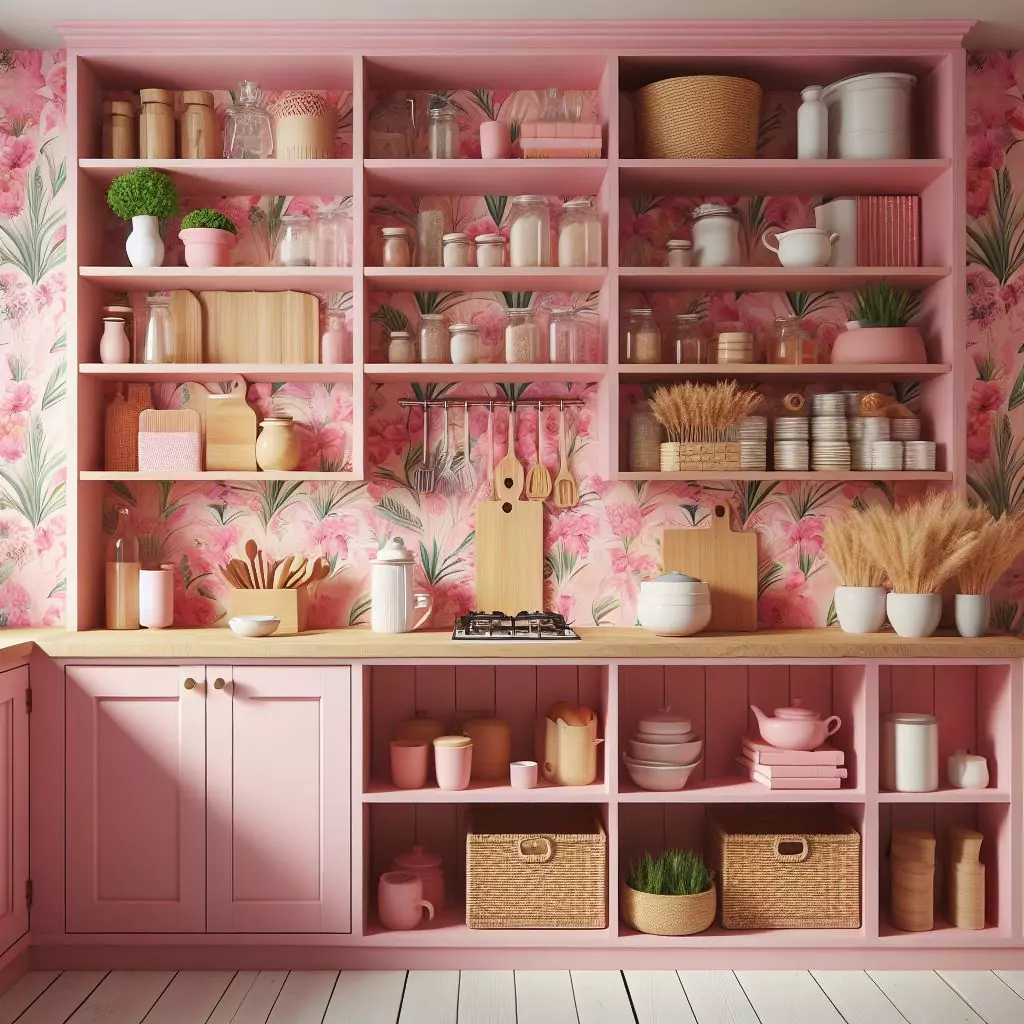
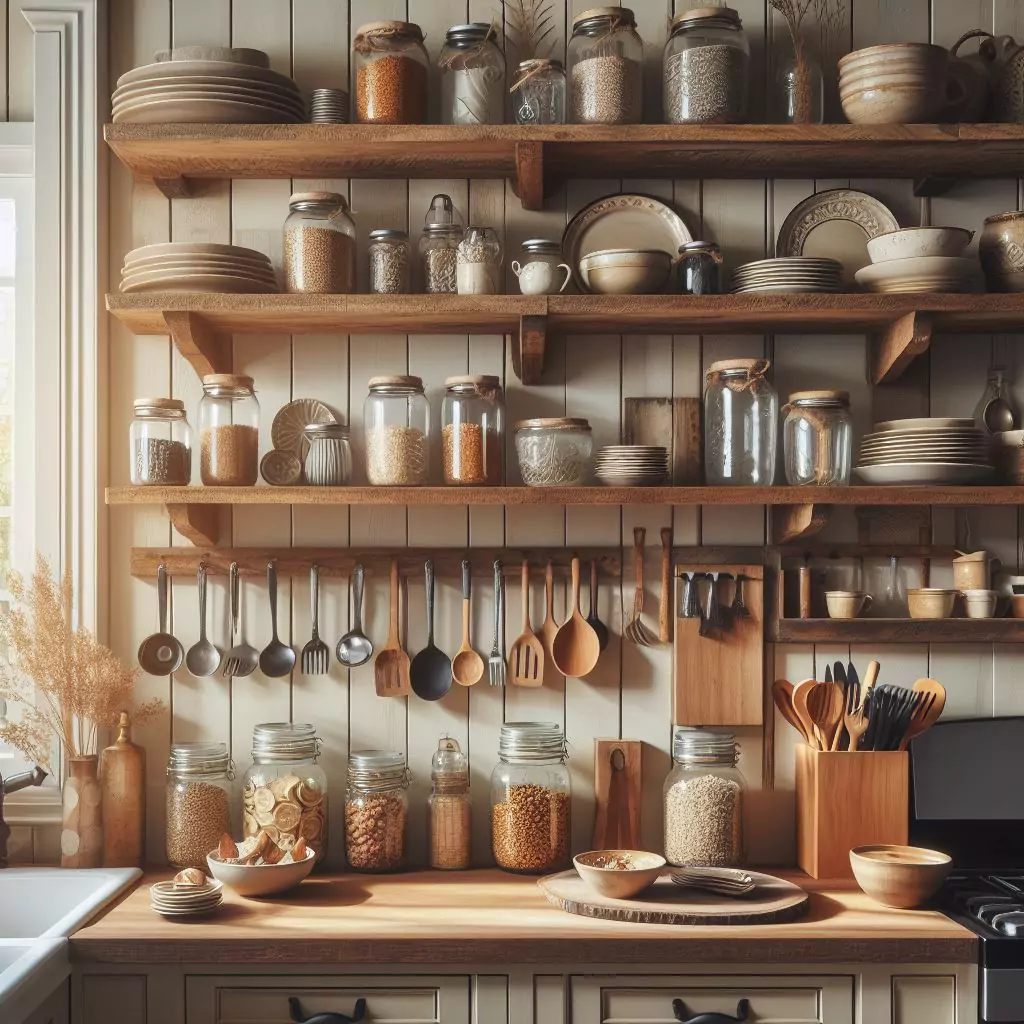
Use wall-mounted shelves or racks to free up counter space. This can be helpful for storing spices, cutting boards, or kitchen utensils.
12. Rotate Stock in the Pantry
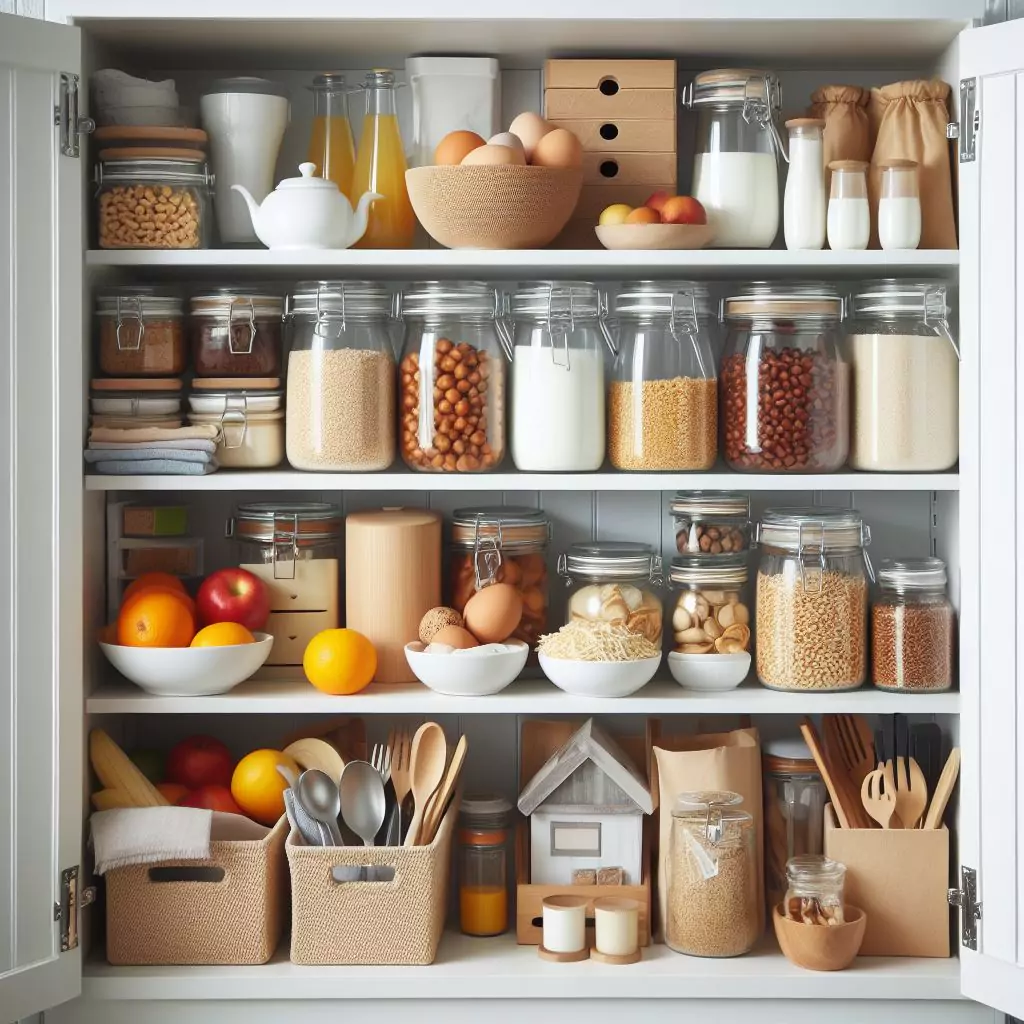
Practice the “first in, first out” rule in your pantry to ensure that older items are used before newer ones. This helps prevent food waste.
13. Keep Counters Clutter-Free
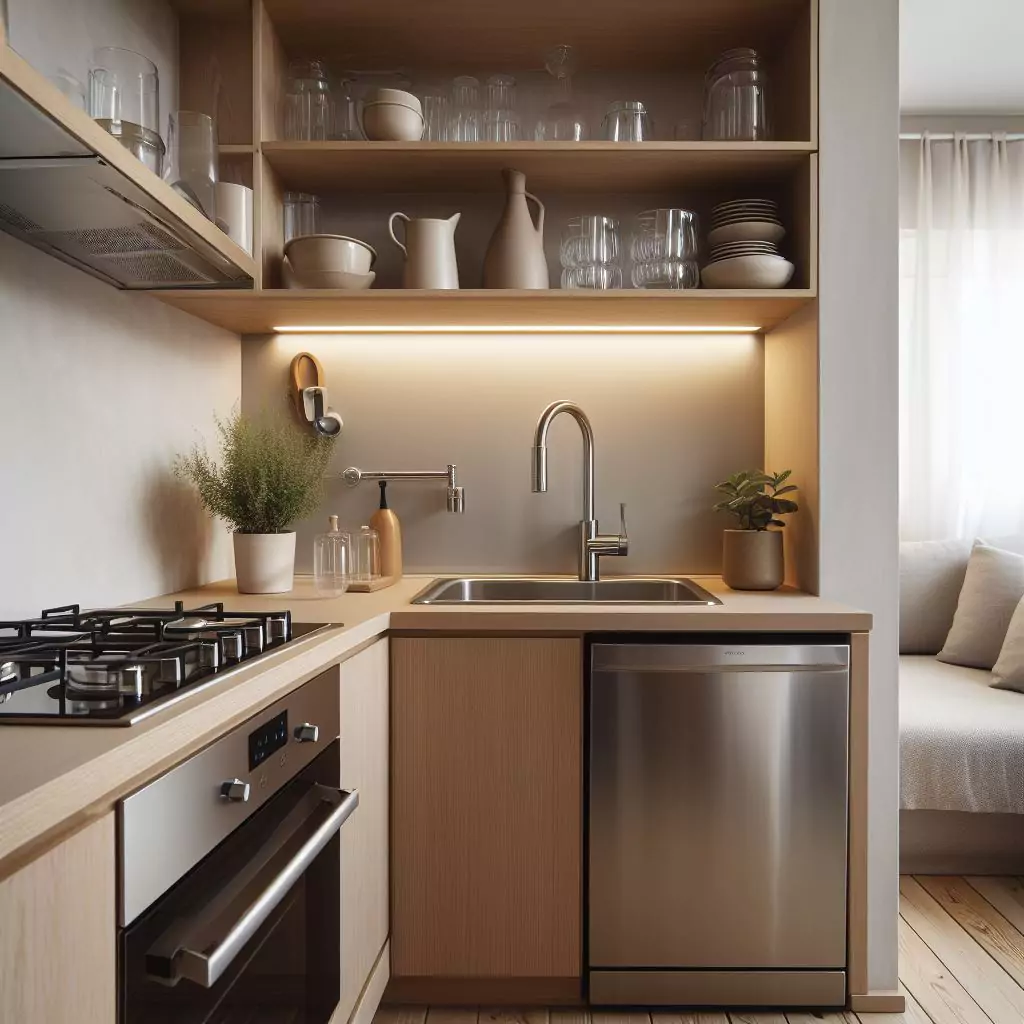
Minimize countertop clutter by only keeping essential items on display. Store small appliances that are not in regular use to create a cleaner look.
14. Regular Maintenance
Schedule regular maintenance sessions to keep your kitchen organized. Please take a few minutes each week to tidy up and put things back in their designated places.
15. Invest in Multi-Functional Furniture
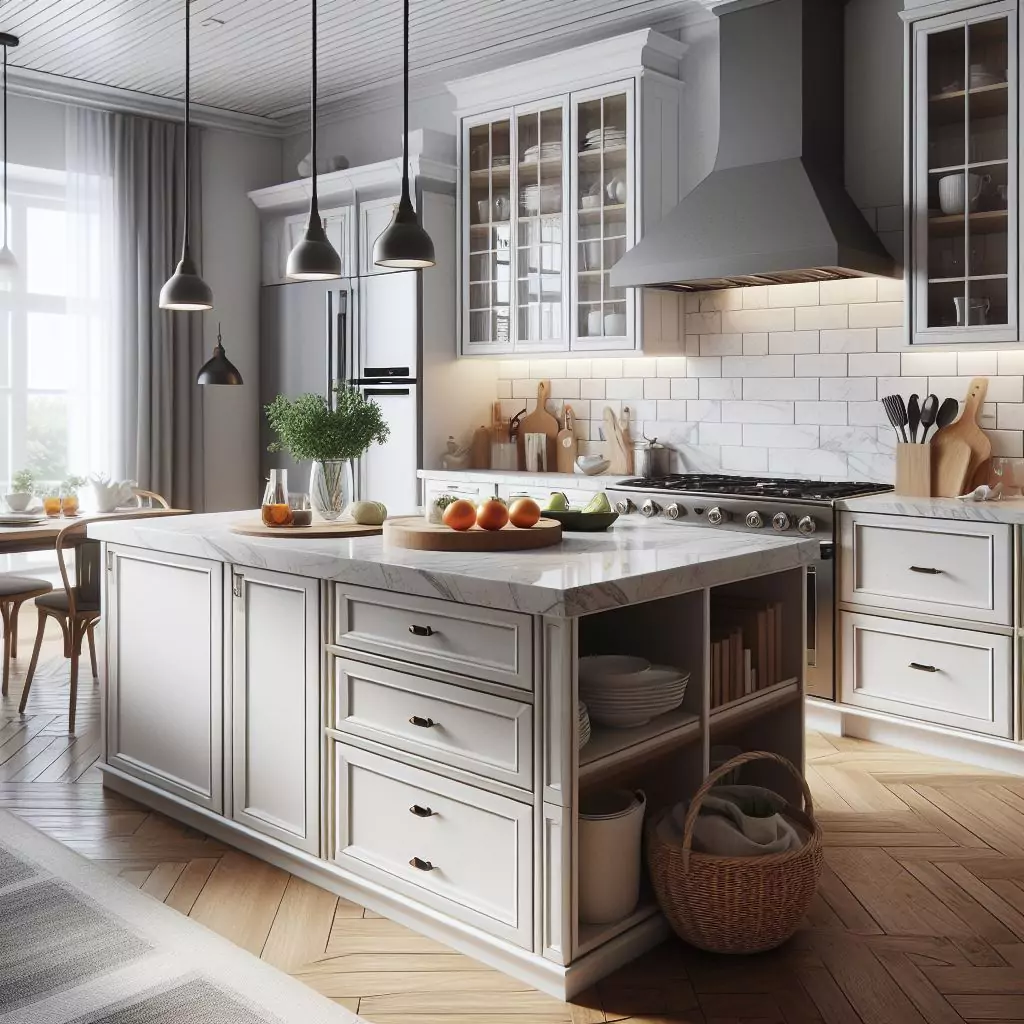
Consider furniture pieces that serve multiple purposes, such as kitchen islands with built-in storage or tables with shelves underneath. This helps maximize space in smaller kitchens.
16. Create Zones

Organize your kitchen into functional zones based on the tasks you perform. For example, create a prep zone near the cutting board, a cooking zone near the stove, and a cleaning zone near the sink.
17. Store Lids and Containers Together

Keep plastic containers and their corresponding lids together. Use stackable containers to save space, and consider storing lids in a separate bin or drawer.
18. Utilize Lazy Susans
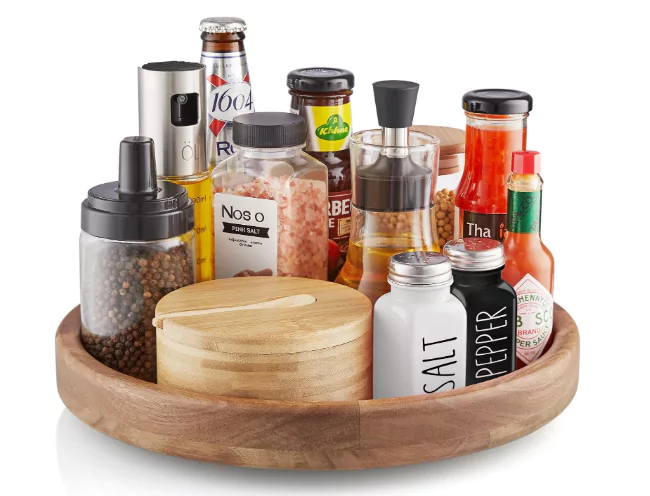
Lazy Susans are great for organizing spices, condiments, or even pots and pans in cabinets. They make it easy to access items without rummaging through the entire cabinet.
19. Create a Coffee/Tea Station

Dedicate a specific area for your coffee maker, tea kettle, mugs, and supplies. This helps streamline your morning routine and keeps everything you need for your favorite hot beverages in one place.
20. Hang Utensils
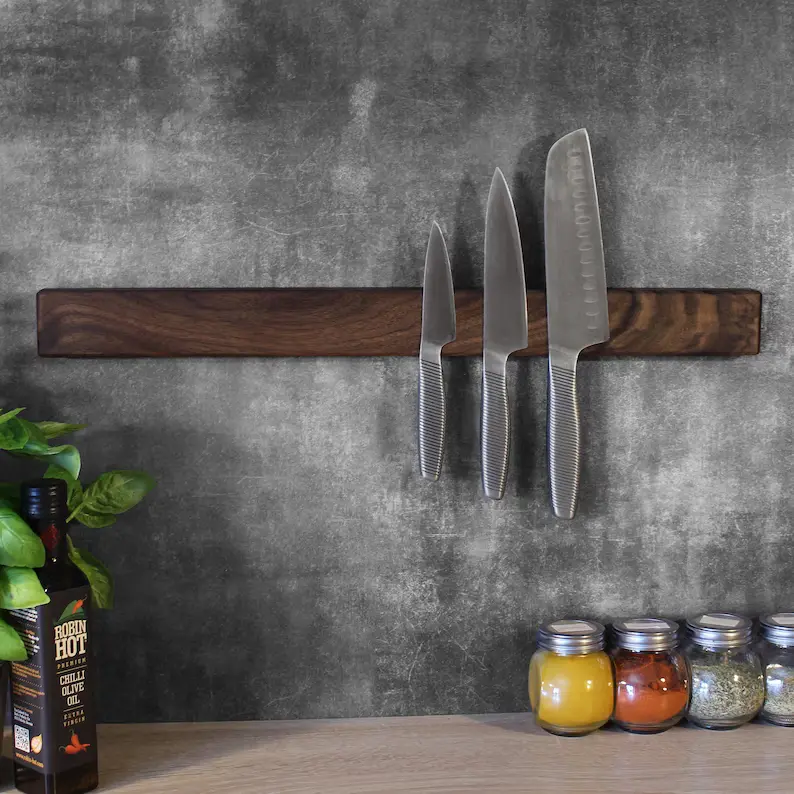
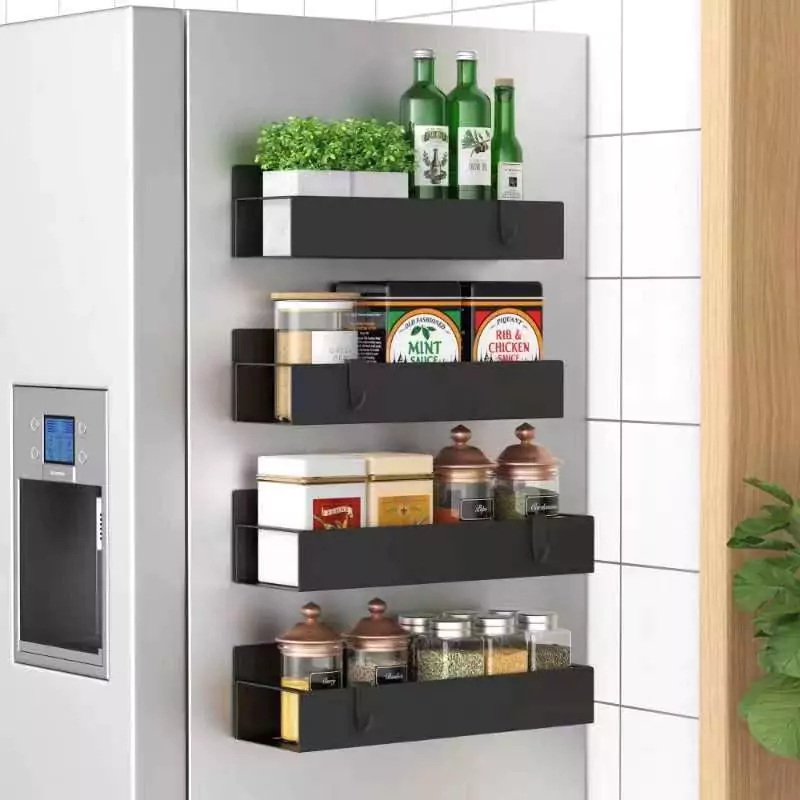
Save drawer space by hanging utensils on a wall-mounted rack or magnetic strip. This not only keeps them within reach but also adds a decorative touch to your kitchen.
21. Use Vertical Dividers for Baking Sheets
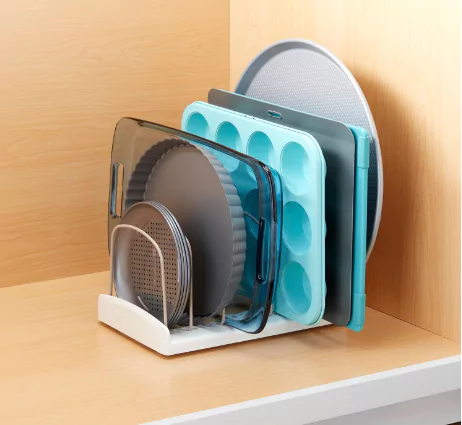
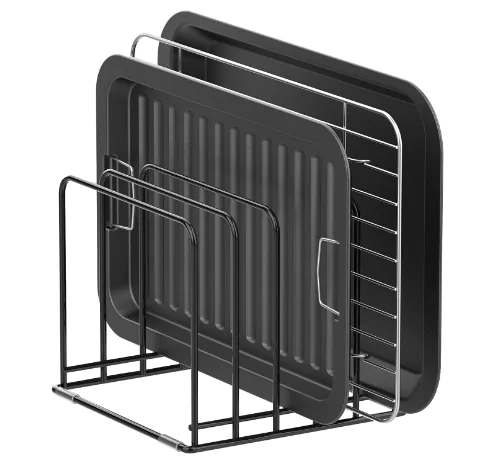
Store baking sheets, cutting boards, and trays vertically with the help of dividers. This prevents them from getting scratched and makes it easy to grab the one you need.
22. Implement a Recycling Center

Create a designated area for recycling bins, trash cans, and compost. Make sure it’s easily accessible for quick disposal while you cook.
23. Organize Tupperware Drawers
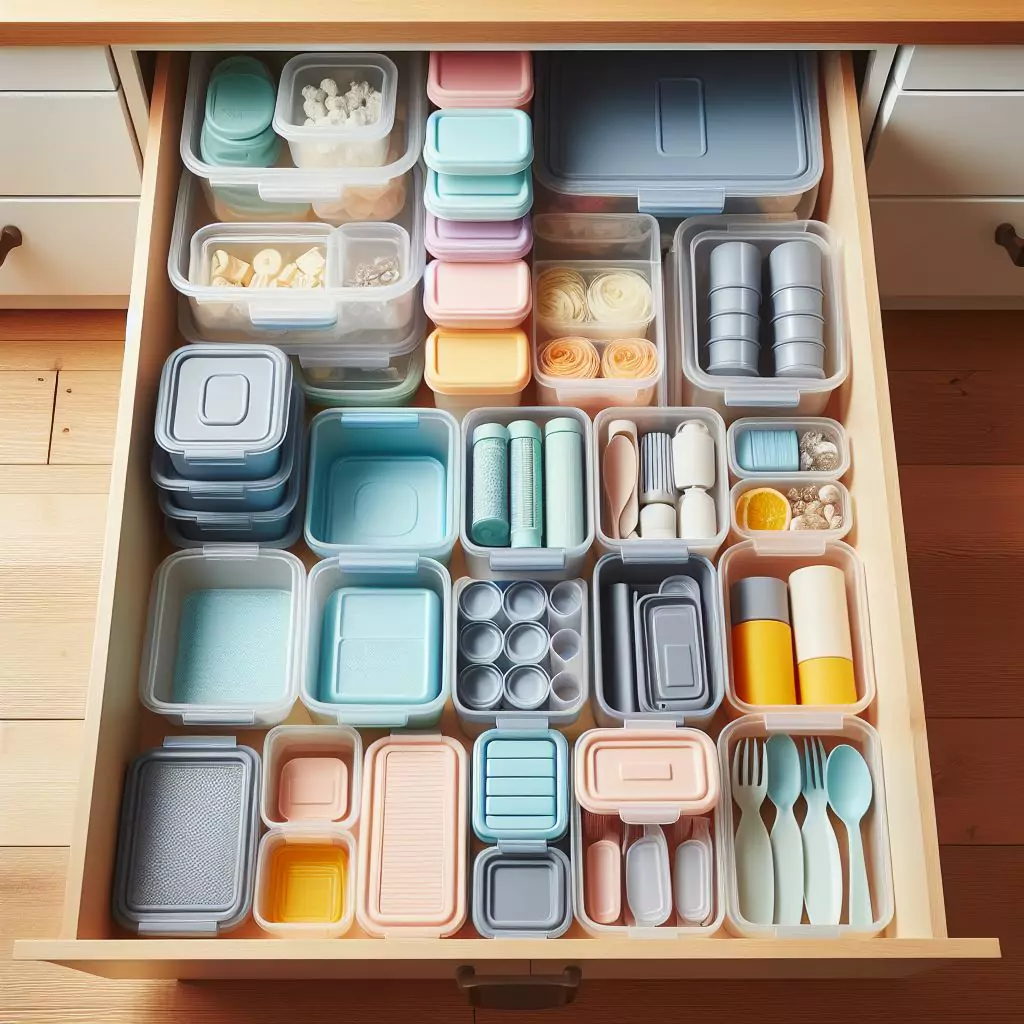
Stack Tupperware containers with their lids or use adjustable dividers to keep them neatly organized. Consider storing lids separately to prevent a chaotic drawer.
24. Keep a Weekly Meal Plan
Plan your meals for the week and organize your pantry and fridge accordingly. This reduces the likelihood of buying unnecessary items and helps keep your kitchen streamlined.
25. DIY Magnetic Spice Rack
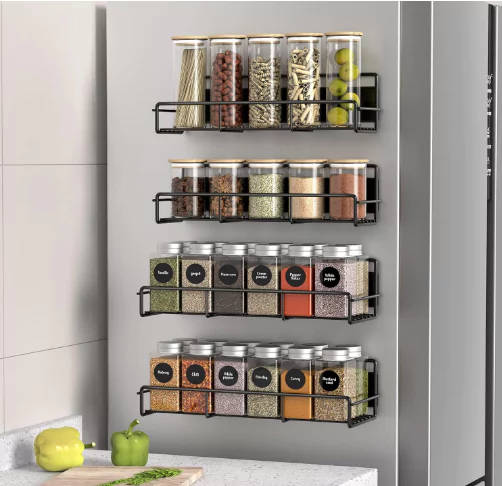
Save counter and cabinet space by creating a magnetic spice rack. Attach small, labeled metal tins to a magnetic board or the side of your fridge for easy access.
26. Utilize Under-Cabinet Space
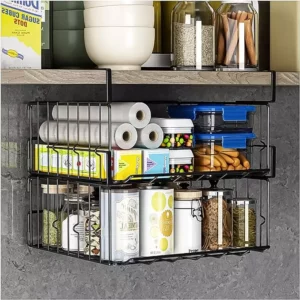
Mount hooks or racks under cabinets to store mugs, cups, or hanging baskets. This is a great way to use often-overlooked space.
27. Coordinate Container Sizes
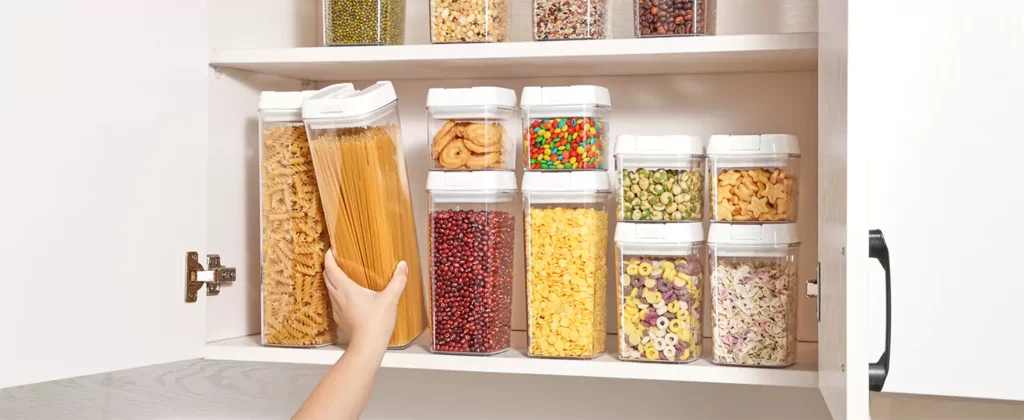
Choose a standardized set of storage containers to make stacking and storing more efficient. This reduces clutter and makes it easier to find matching lids.
28. Implement a Filing System for Recipes
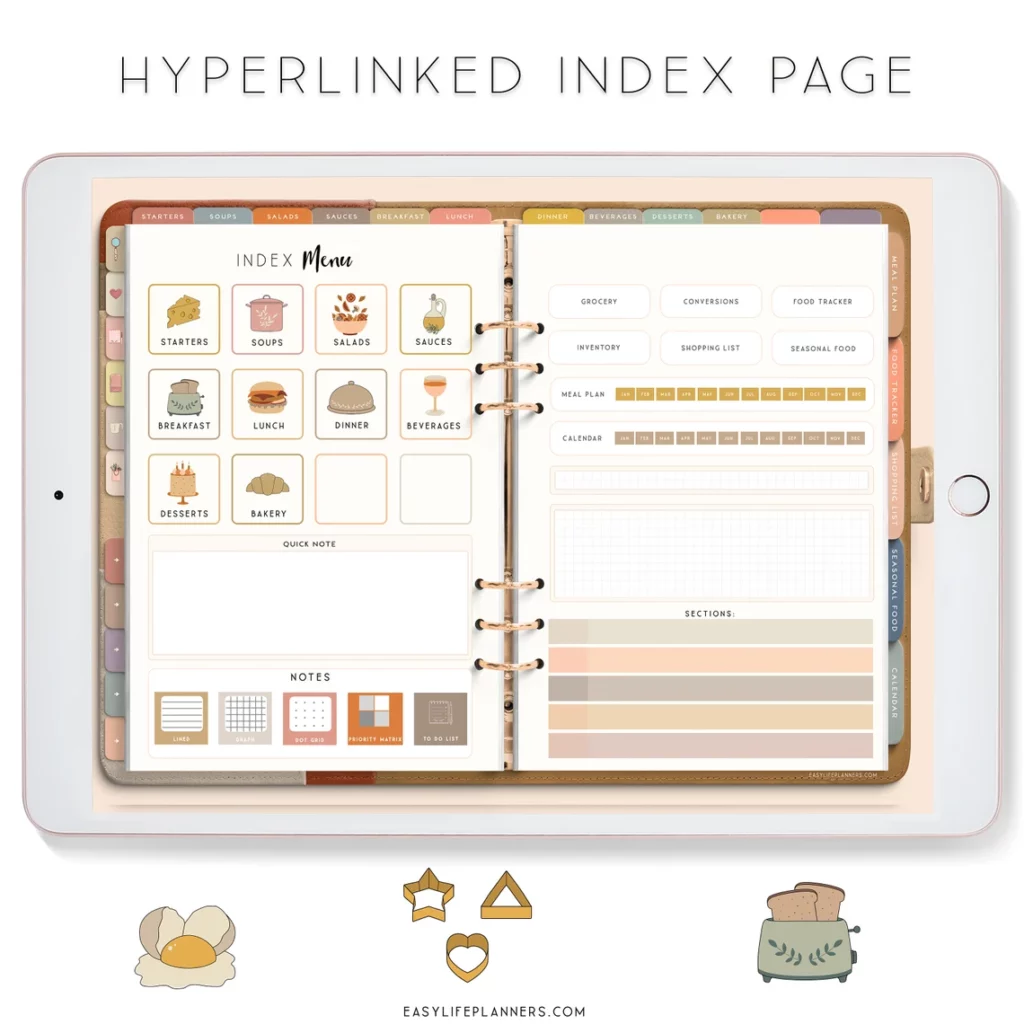
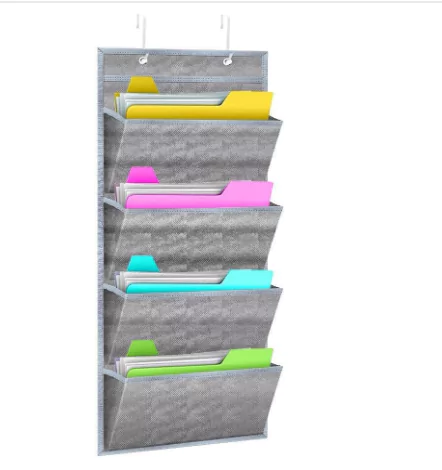
If you have a collection of recipes, organize them in a filing system or use a digital recipe organizer. This makes it easier to find and follow your favorite recipes.
29. Rotate Seasonal Items
Store seasonal or infrequently used items in less accessible areas and rotate them based on the time of year. This helps keep your kitchen clutter-free and ensures that you’re utilizing space effectively.
30. Use Basket Systems
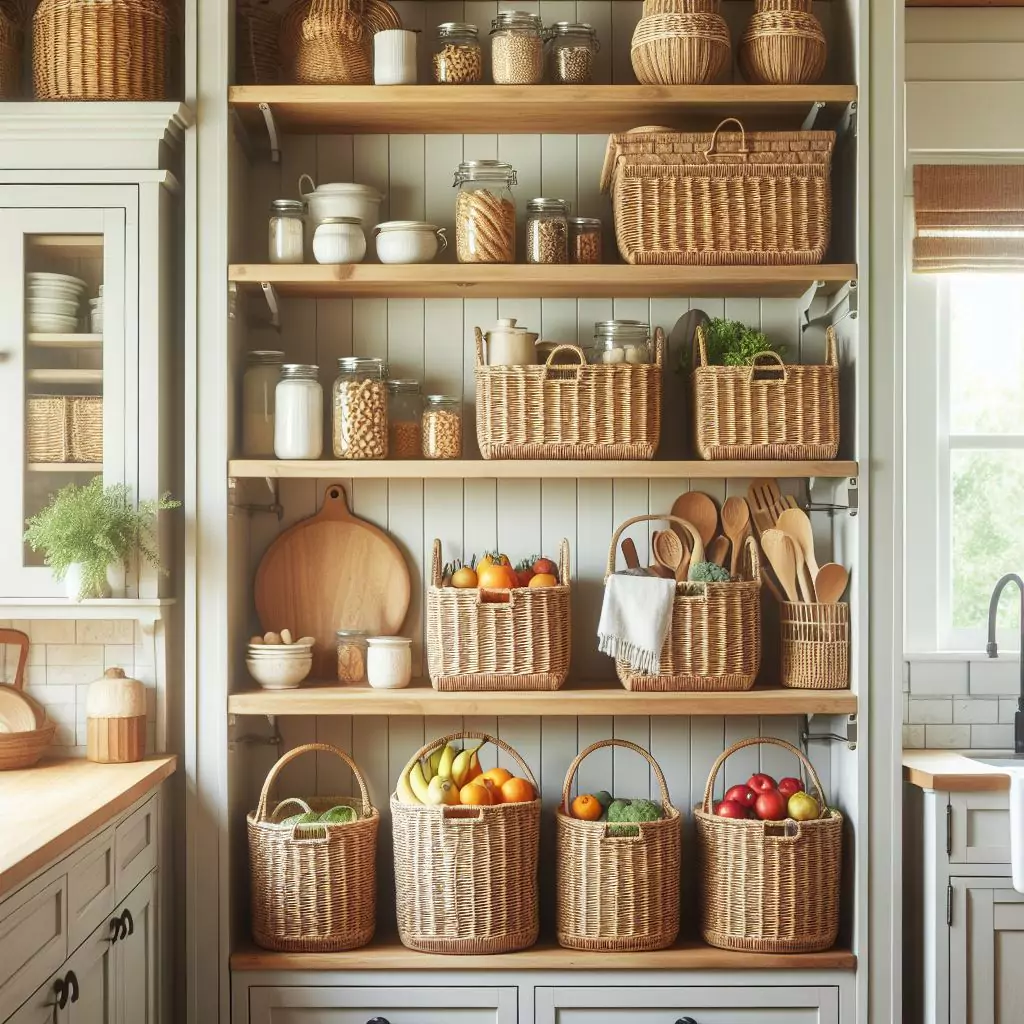

Utilize baskets or bins for grouping similar items, such as snacks, baking supplies, or cleaning products. Pull-out baskets in cabinets or on pantry shelves can make it easy to access and organize these items.
31. Keep a Donation Bin
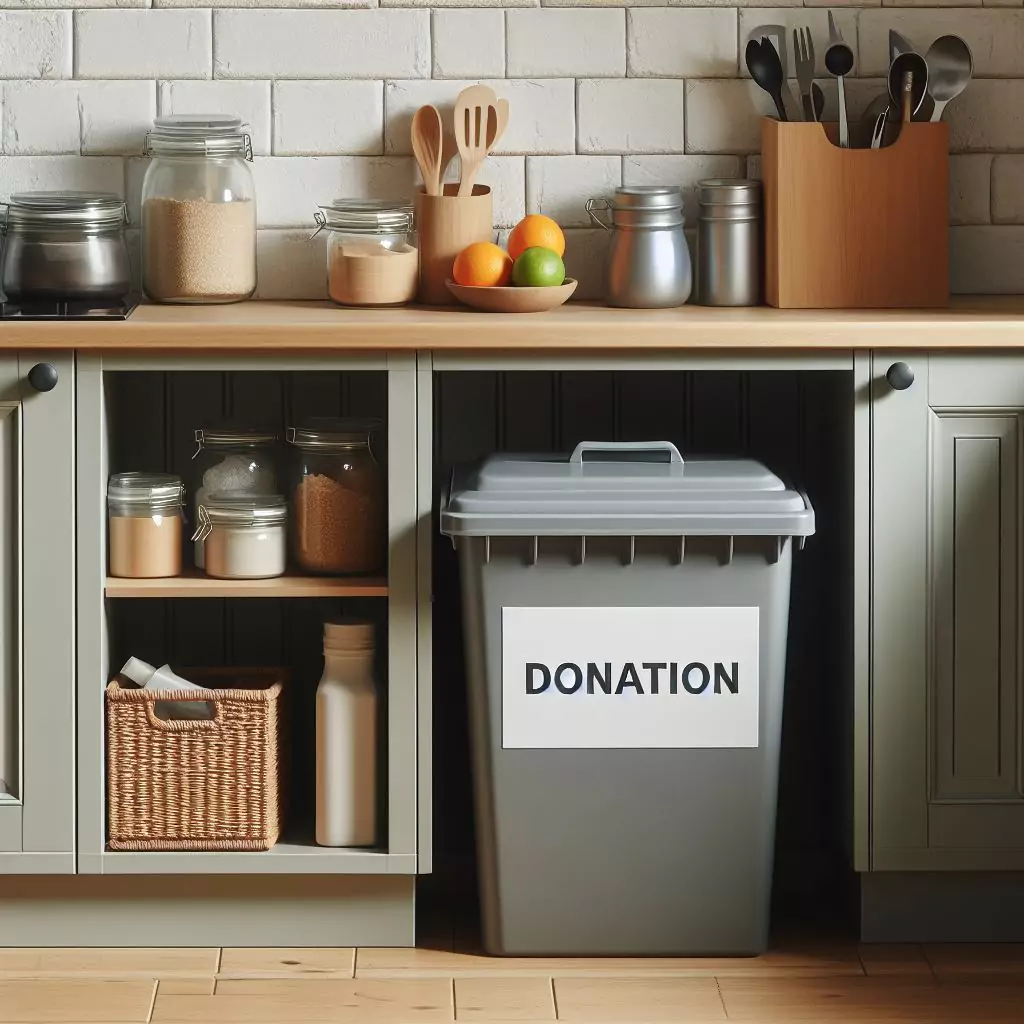
Designate a bin or box for items you no longer need or use. As you come across items during your regular kitchen activities, toss them into the donation bin. This helps prevent unnecessary clutter.
32. Organize Your Freezer
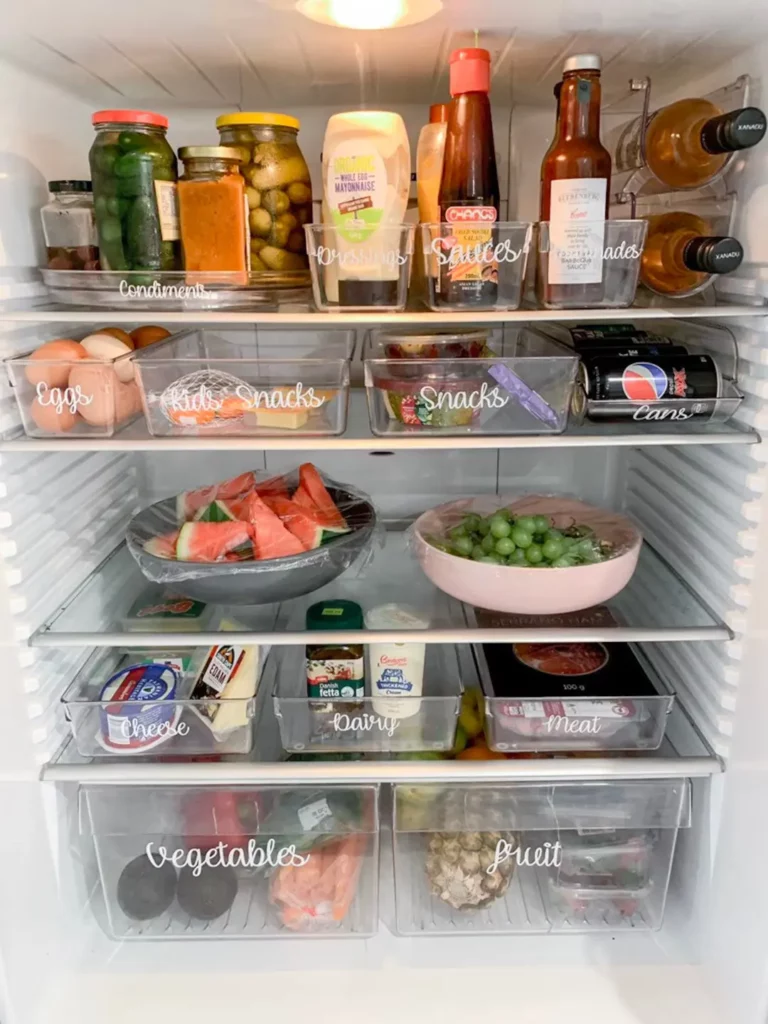
Group similar items together in your freezer, using labeled bins or containers. Regularly defrost and clean out your freezer to keep it organized and to prevent freezer burn.
Check out new freezer organizer bins on Amazon.
33. Create a Charging Station
Designate a specific area in the kitchen for charging electronic devices. This can help keep cords organized and ensure that devices are ready to use when you need them.
34. Invest in Adjustable Shelving
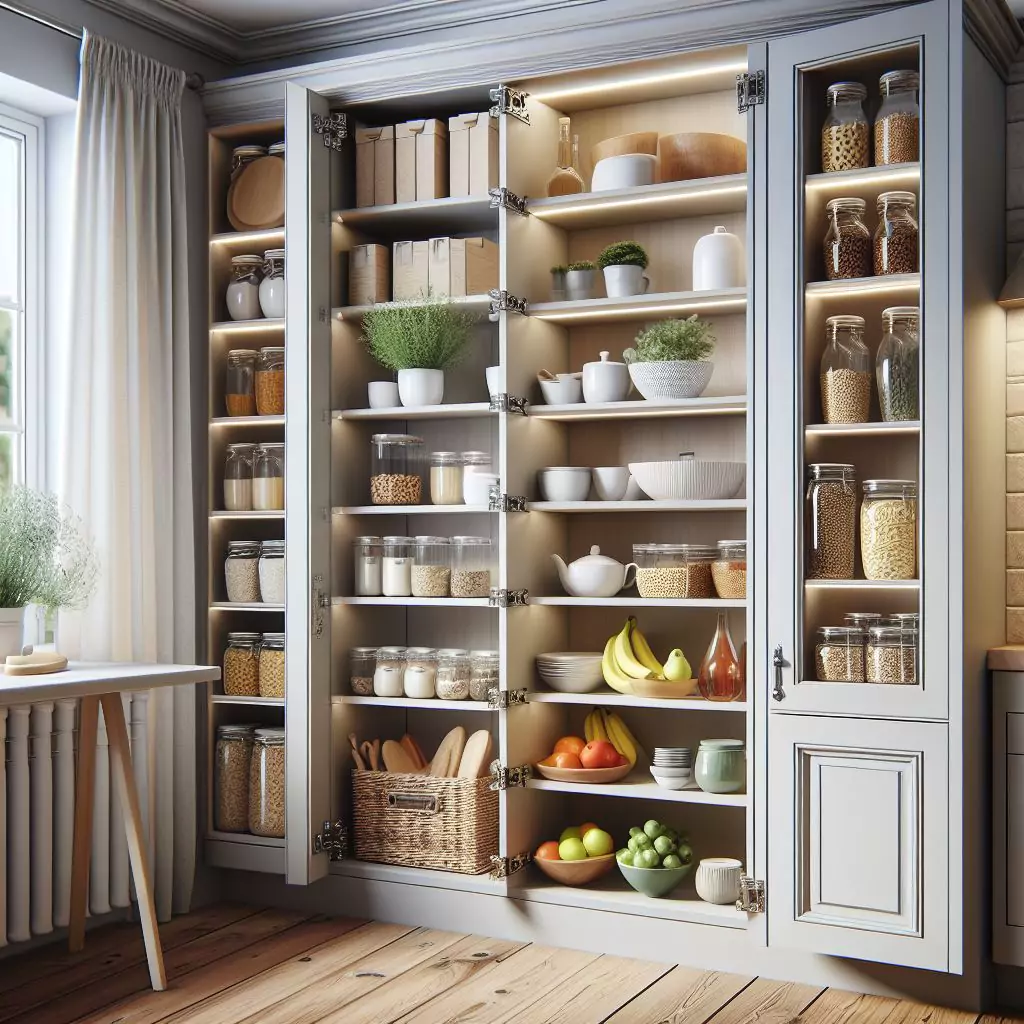
Consider installing adjustable shelving in cabinets and pantry spaces. This allows you to customize the height of shelves based on the items you’re storing.
35. Store Pot Lids with Tension Rods
Use tension rods placed vertically in a cabinet to organize pot lids. This prevents them from getting scattered and makes it easy to find the right lid when you need it.
36. Implement a Color-Coding System
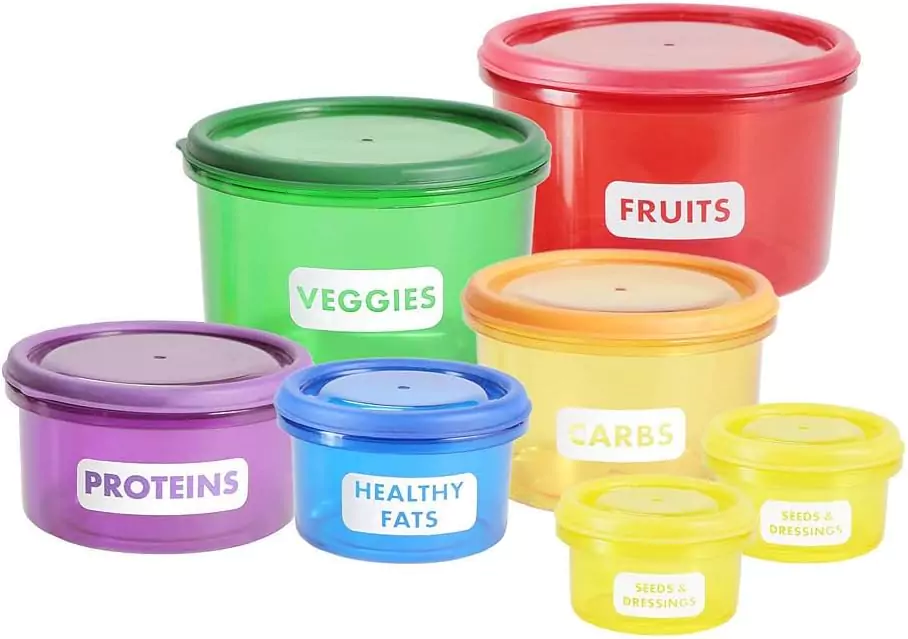
Use color-coded labels or containers for different categories of items. This can be especially helpful in the pantry or fridge, making it easy to identify groups of similar products.
37. Create a Herb Garden
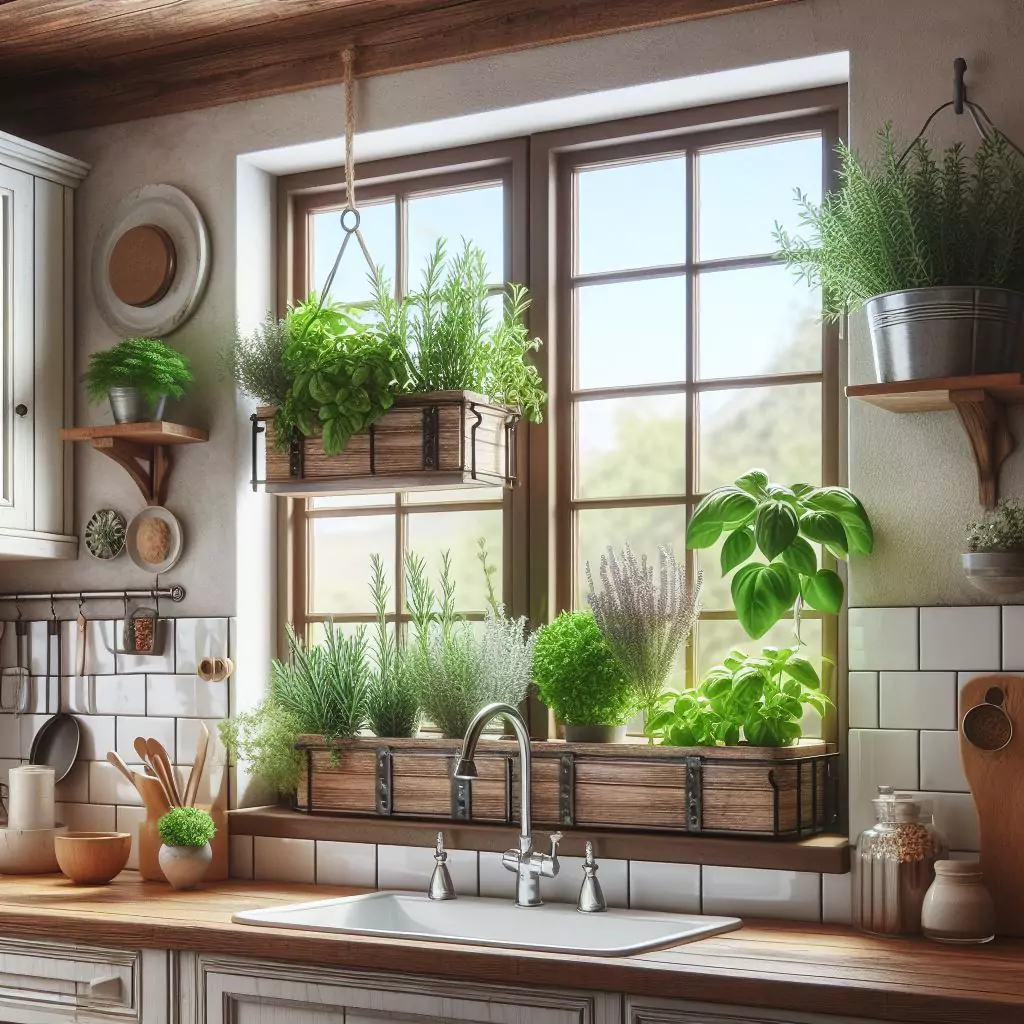
If space allows, consider growing your herbs in a kitchen herb garden. This not only adds a fresh touch to your kitchen but also provides easy access to herbs while cooking.
38. Install Pull-Out Shelves
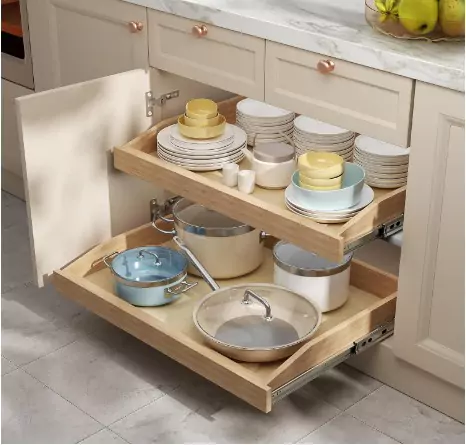
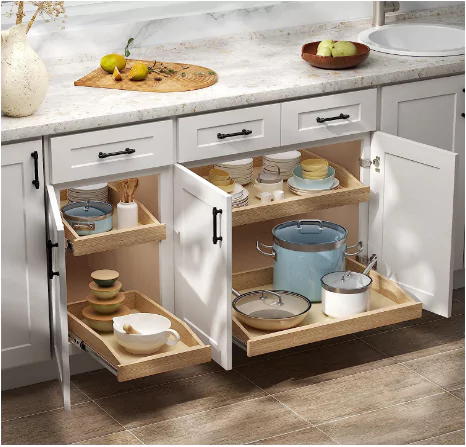
Installing pull-out shelves in cabinets makes it easier to access items stored in the back. This is particularly useful for pots, pans, and other kitchen essentials.
39. Organize Plastic Bags
Reuse plastic bags for various purposes and store them neatly in a dispenser or a designated area. This reduces clutter and ensures they’re readily available when needed.
40. Regularly Review and Adjust
Periodically review your kitchen organization system and make adjustments as needed. Lifestyle changes, new appliances, or a growing family may require you to adapt your organization strategies.
41. Utilize the Inside of Cabinet Doors
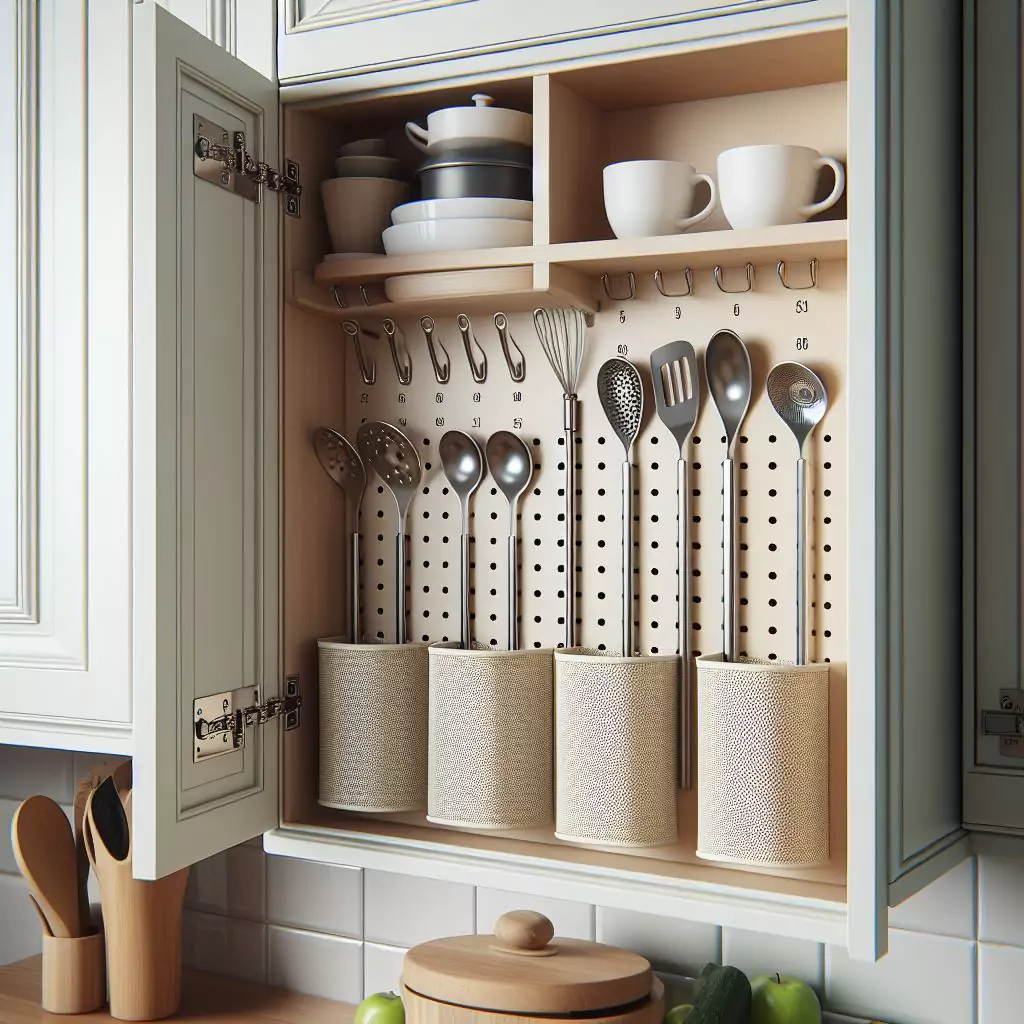
Attach hooks or adhesive organizers to the inside of cabinet doors for additional storage. This space can be used for storing pot holders, measuring spoons, or small kitchen tools.
42. Organize Cleaning Supplies
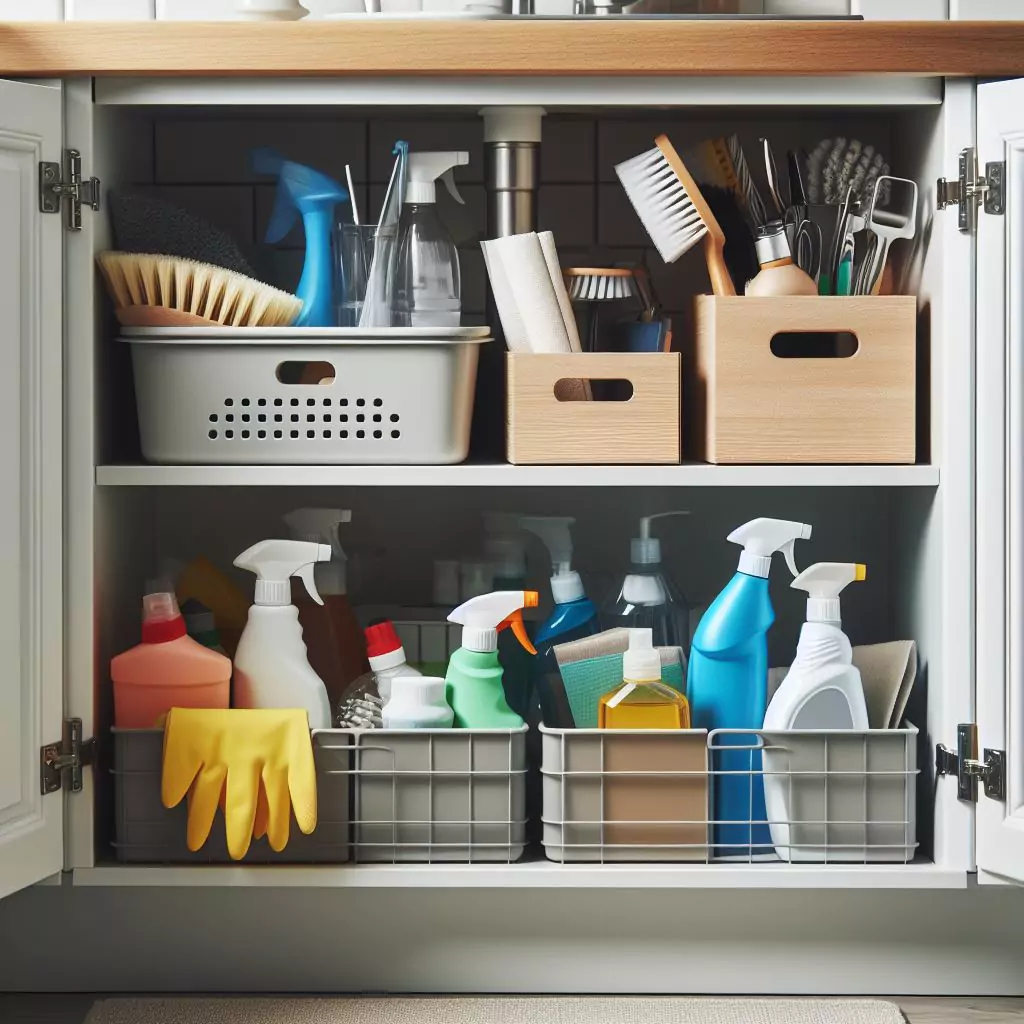
Keep cleaning supplies in a designated area under the sink or in a nearby cabinet. Use bins or caddies to group similar items and make them easy to access.
43. Organize Kids’ Items
If you have children, create a designated area in lower cabinets or drawers for their dishes, snacks, and lunchbox supplies. This encourages independence and keeps kid-friendly items easily accessible.
44. Hang Pots and Pans
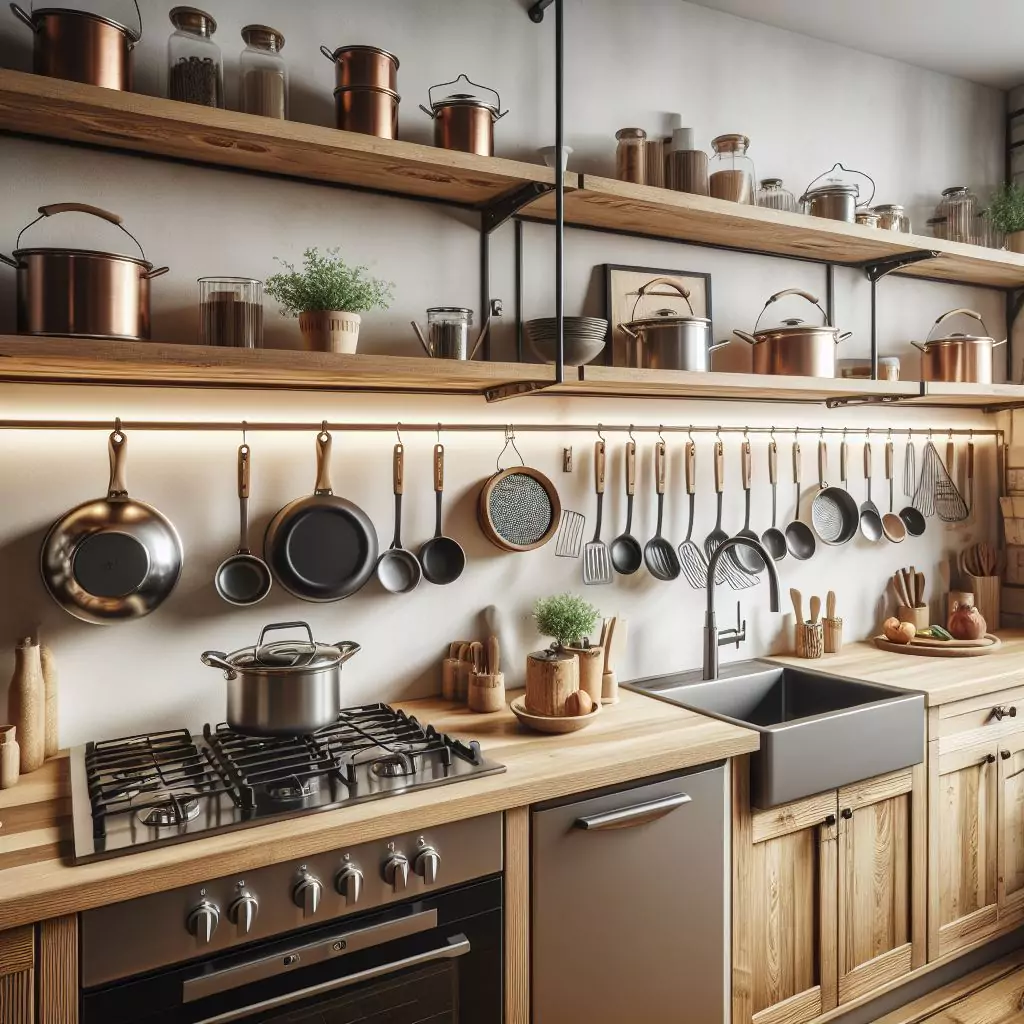
Install a pot rack or hooks above your kitchen island or near the stove to hang pots and pans. This not only saves cabinet space but also adds a decorative element to your kitchen.
45. Group Items by Function
Organize your kitchen tools, gadgets, and utensils by function. For example, keep all baking tools together, grouping spatulas, measuring cups, and mixing bowls in the same area.
46. Use Drawer Dividers for Cutlery

Keep cutlery neatly organized in drawers using dividers. Arrange utensils by type, and make sure the dividers fit the length of your drawers to prevent sliding.
47. Organize Cookbooks
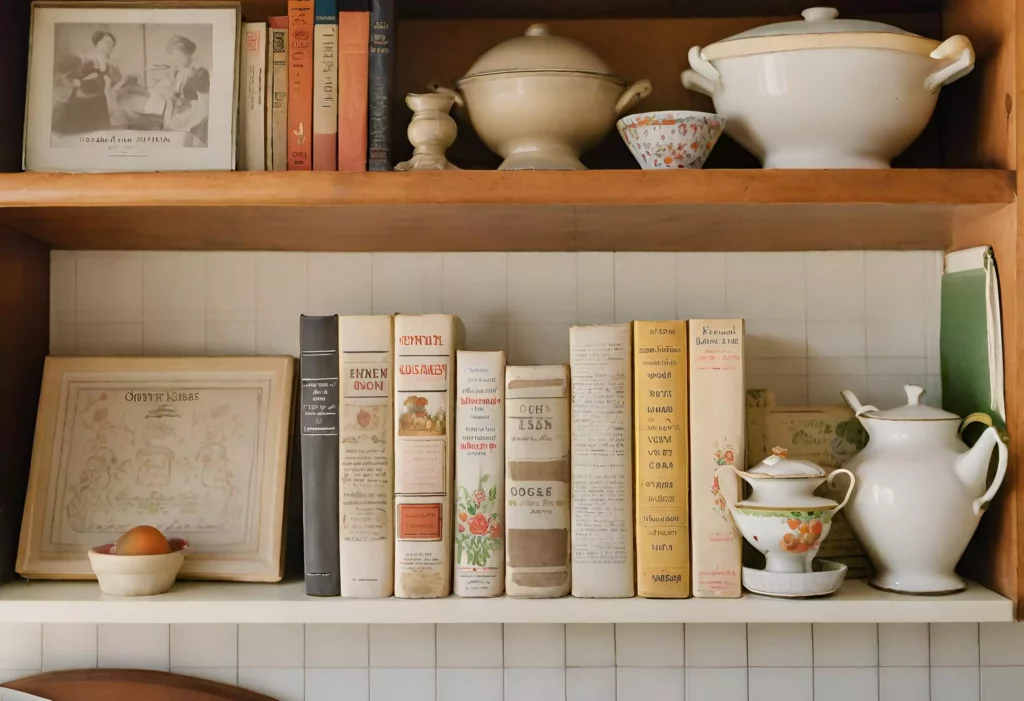
If you have a collection of cookbooks, arrange them by category or cuisine type. Display your favorites on a shelf or in a designated area for easy access.
48. Implement a Snack Station
Create a designated area for snacks, whether it’s in the pantry or a specific cabinet. Use baskets or clear containers to keep different snacks organized and visible.
49. Rotate Spices
Regularly go through your spice collection and discard expired items. Keep frequently used spices within arm’s reach and less frequently used ones in a separate area.
50. Utilize Folding Step Stools
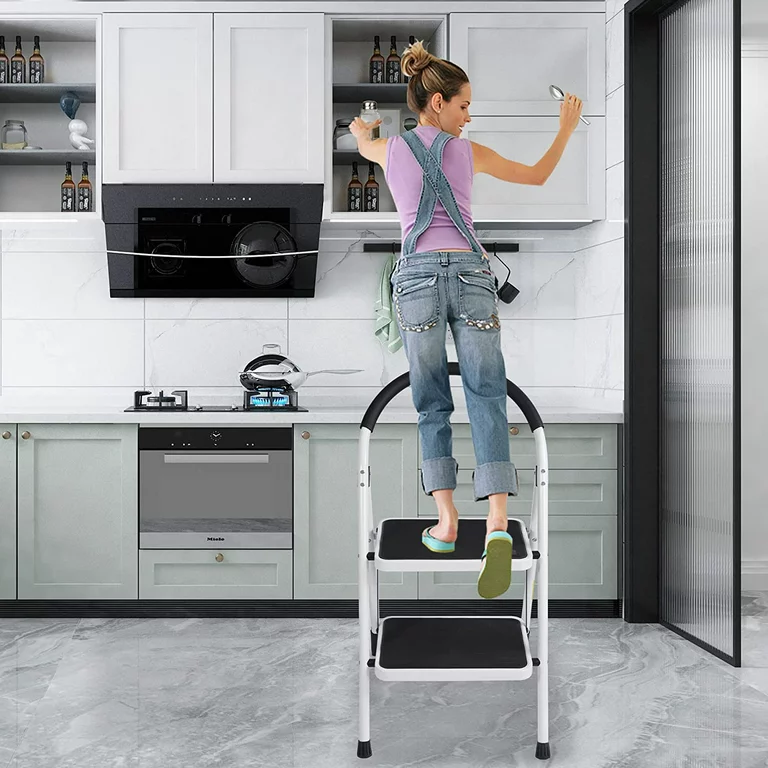
Keep a folding step stool in the kitchen for easy access to higher cabinets. This ensures that you can reach items on higher shelves without straining.
Wrap Up
By implementing these practical tips, from decluttering to utilizing vertical space, you can transform your kitchen into a functional and aesthetically pleasing space.
Remember, the key is consistency. Regular maintenance and occasional adjustments to your organization systems will keep your kitchen tidy and make your culinary endeavors a breeze.
Happy cooking in your newly organized kitchen!
